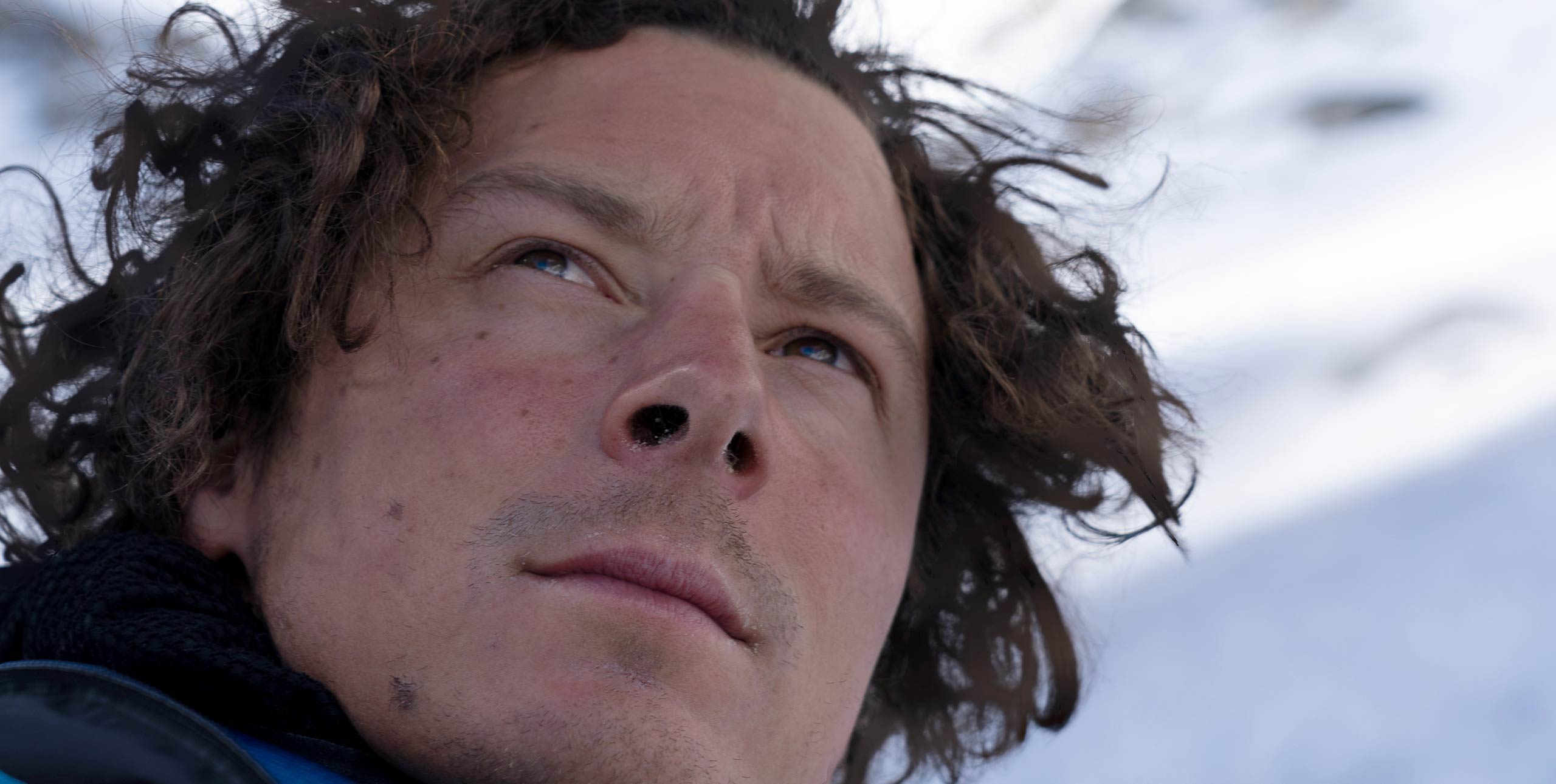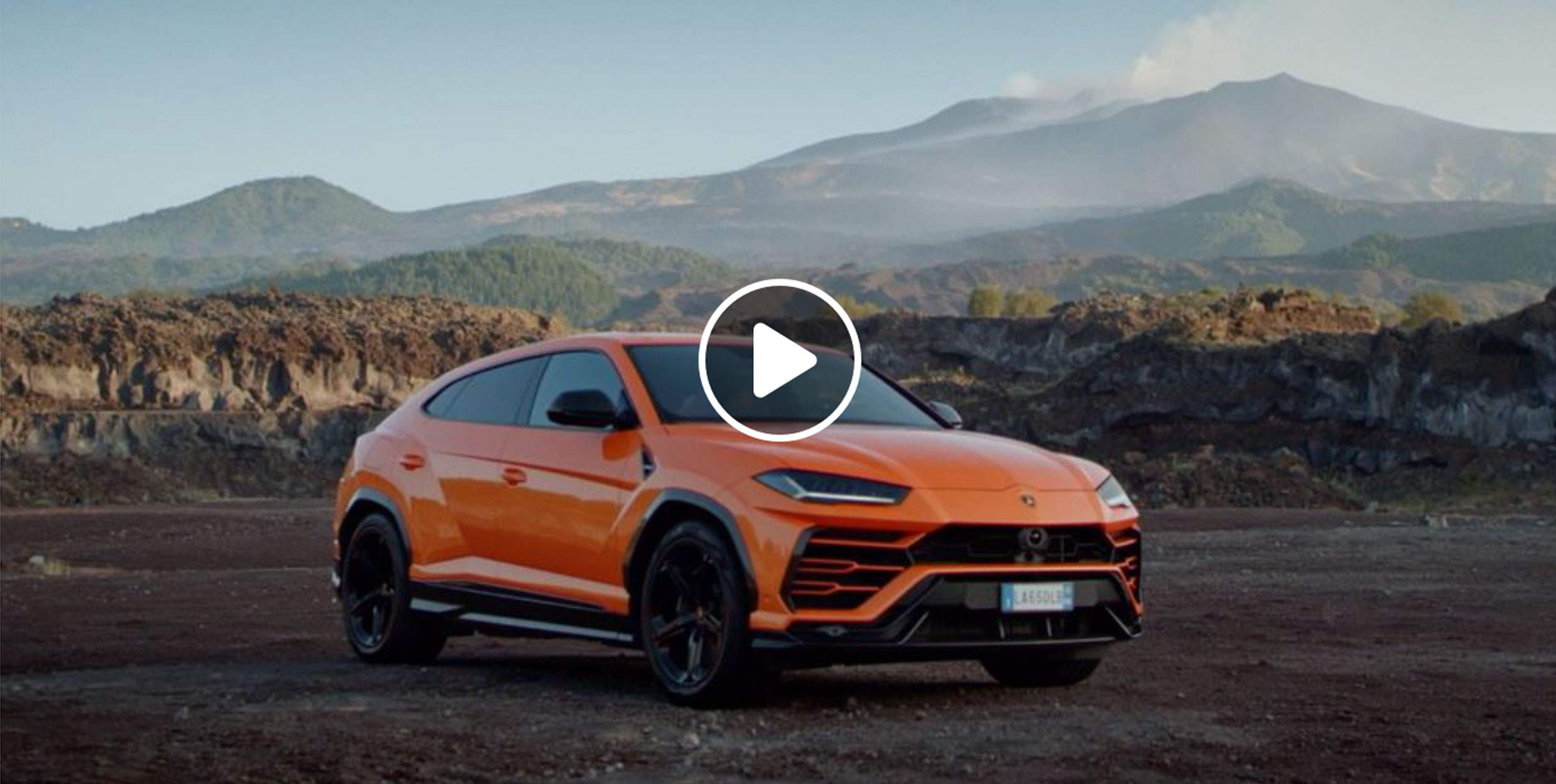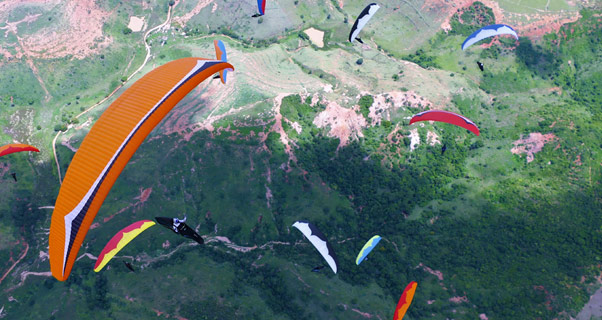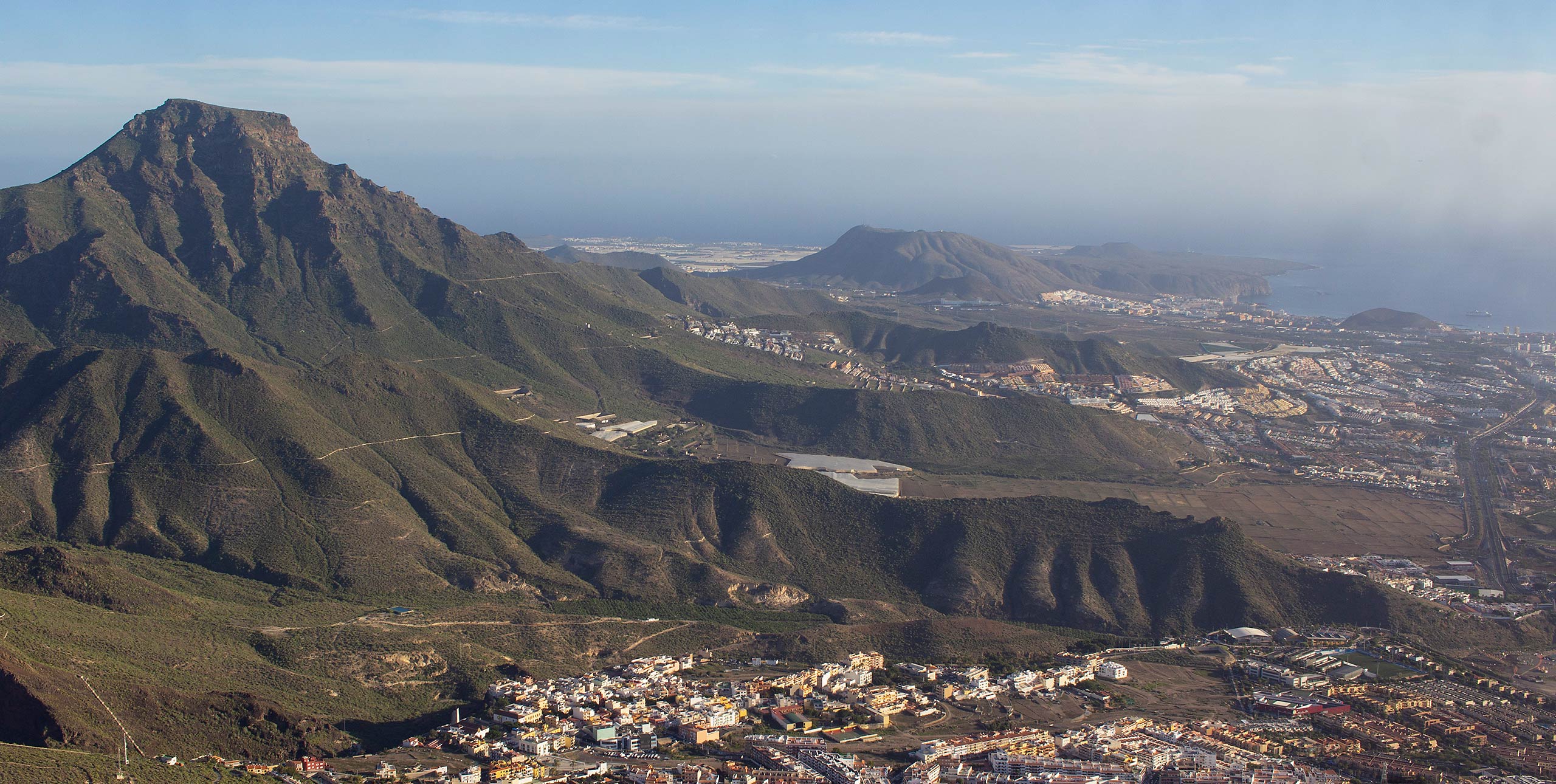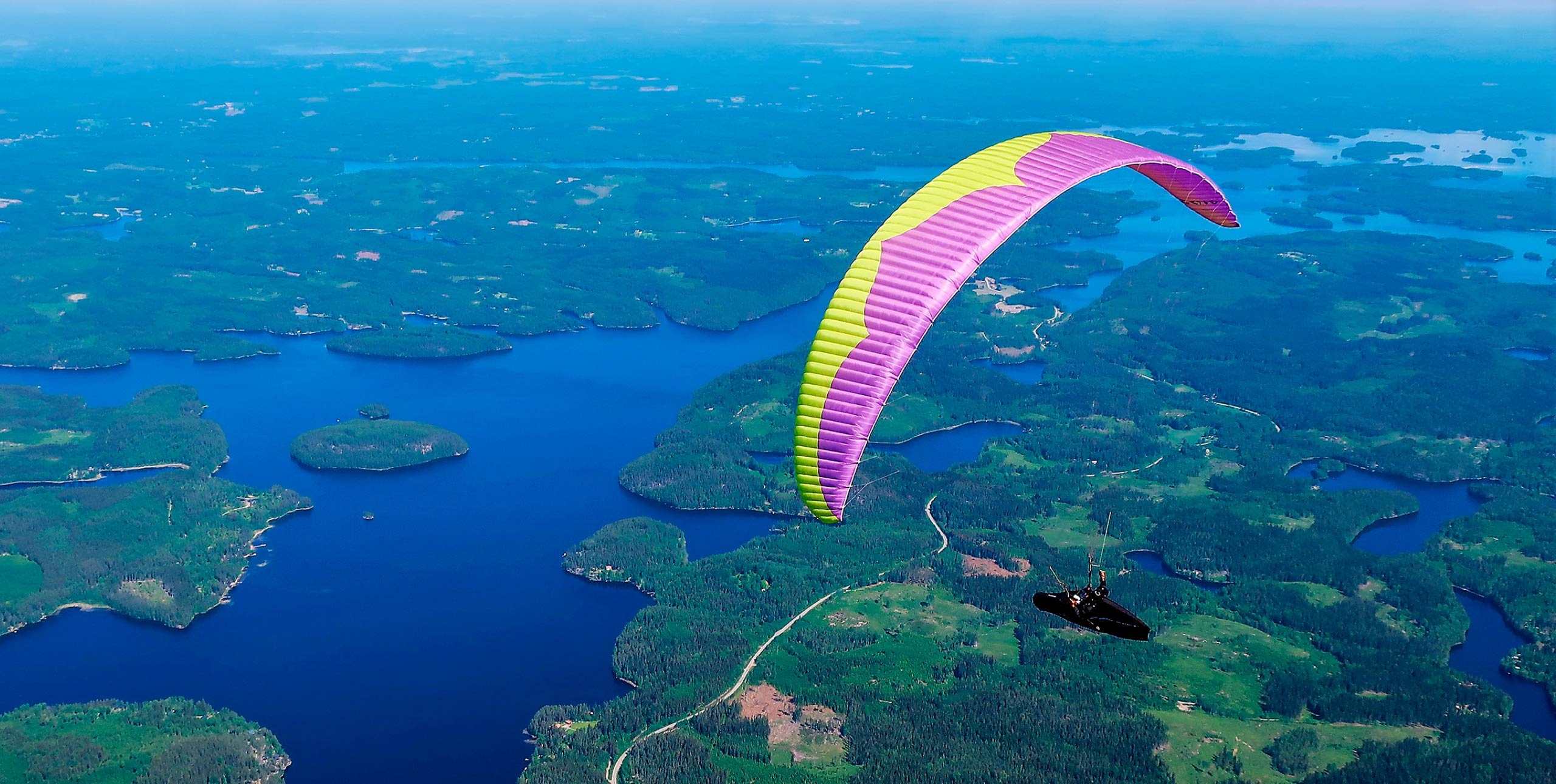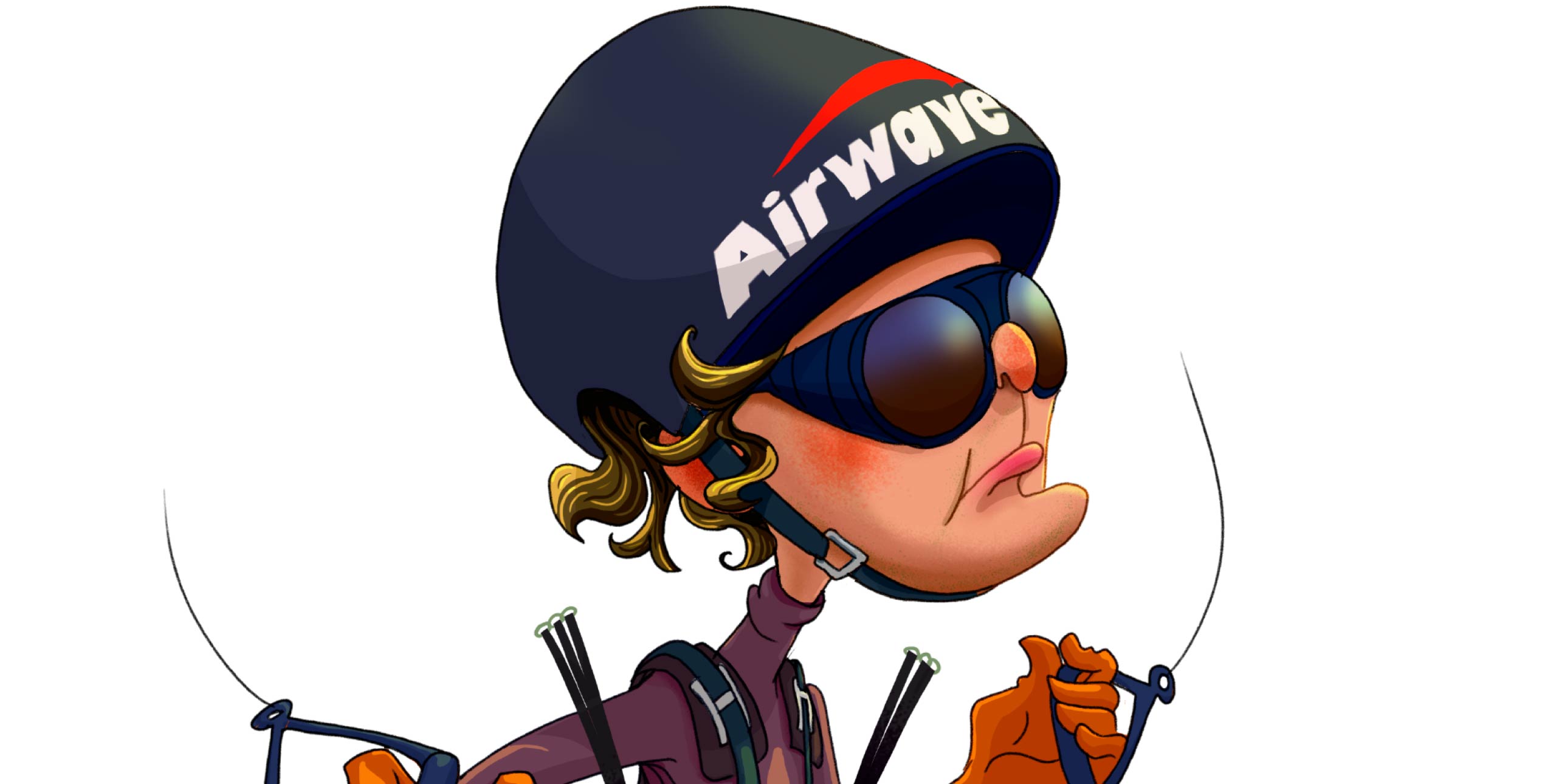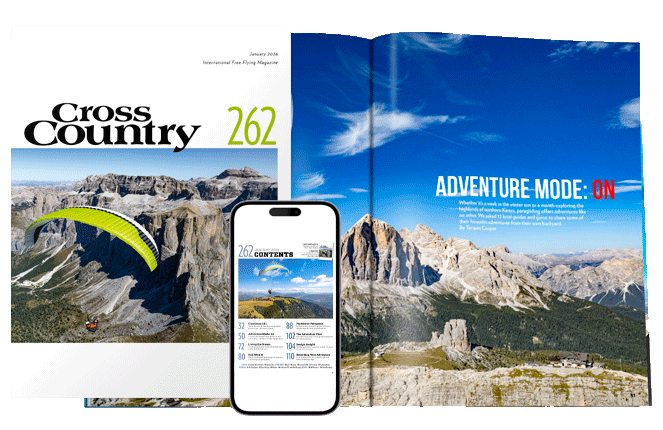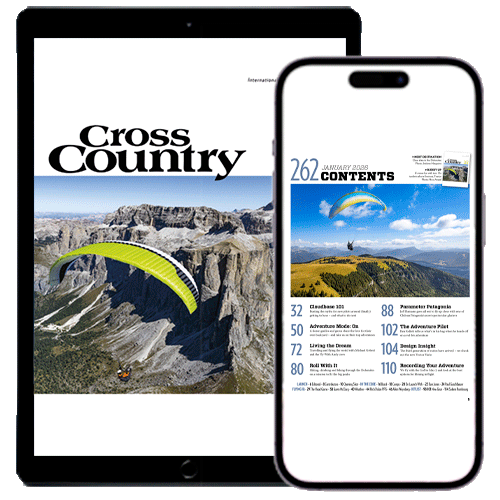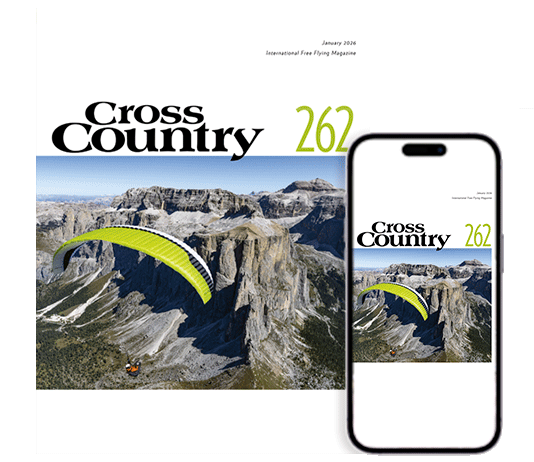In January 2019 Aaron Durogati headed to the mountains of southern Patagonia to combine big-wall climbing and ultralight flying. Ed Ewing found out more.
The biggest, biggest dream was to try to climb the Cerro Torre and fly from Cerro Torre,” says Aaron Durogati. It is late winter, almost early spring where he lives in the Italian Alps, but he has just returned from a month-long trip to the southern summer. Argentina to be precise, and the incredible rock and ice walls of the 3,000m mountain massifs on the edge of the Southern Patagonian ice field.
The area is famously windy, capped almost permanently by cigar-shaped lenticular clouds as the wind blows over the Andes from the west. The Southern Patagonian ice field adds another layer of complexity, creating strong and gusty katabatic winds.
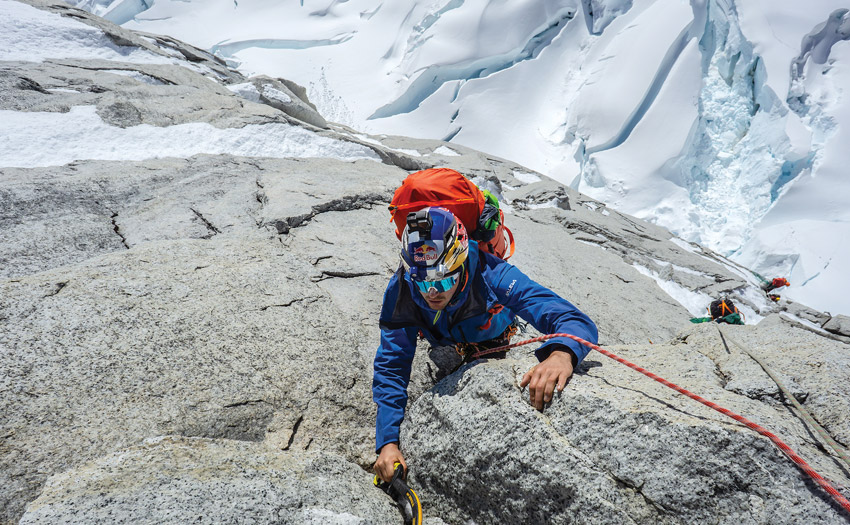
below the summit. Photo: Daniel Ladurner
“I was in Patagonia one month. And the weather window we got was a maximum of two days,” Aaron explains. “So it wasn’t possible to climb Cerro Torre.” At 3,128m Cerro Torre is one of the most dramatic peaks in the region. It is sheer on all sides, a blade of rock with open faces blasted by the wind and a summit scorched with snow and ice. It is famous in mountaineering circles, and especially so in the Italian climbing world.
Its first ascent was controversial, claimed by two Italian alpinists in 1959: Cesare Maestri and Toni Egger. Egger died in an avalanche on the descent, and Maestri, who made it back, declared that the camera with the summit photos had gone with him. Doubts about the ascent swirled around like snow, and the peak has attracted world-class alpinists ever since.
“For the Cerro Torre you need a window of at least four to five days,” says Aaron. Climbing like this involves staying lightweight and moving with all your equipment, bivouacking at night on the mountain. You want the weather to be clear.
“I mean, the Patagonia bad weather is far worse than bad weather in the Alps.”
Instead, Aaron and his climbing partner Daniel Ladurner turned their attention to the equally dramatic Fitz Roy group nearby. “We managed to climb four peaks in Fitz Roy,” he says. “And I managed to fly a bit too!”
Carrying a lightweight Advance Pi and using an Advance Strapless harness his flying kit came to “about 2.2kg”. That’s without a reserve of course. It was light and small enough to carry on the long days of climbing without holding him back.
The first mountain they climbed was Aguja Poincenot (3,002m), a 15-hour day. “The weather was OK but it was maybe about 100km/h to 130km/h in the gusts. It was really impressive. I was shocked by the power of the wind, which was physically pulling us out from the wall as we climbed, so it was really ugly. So of course from there I didn’t fly.”
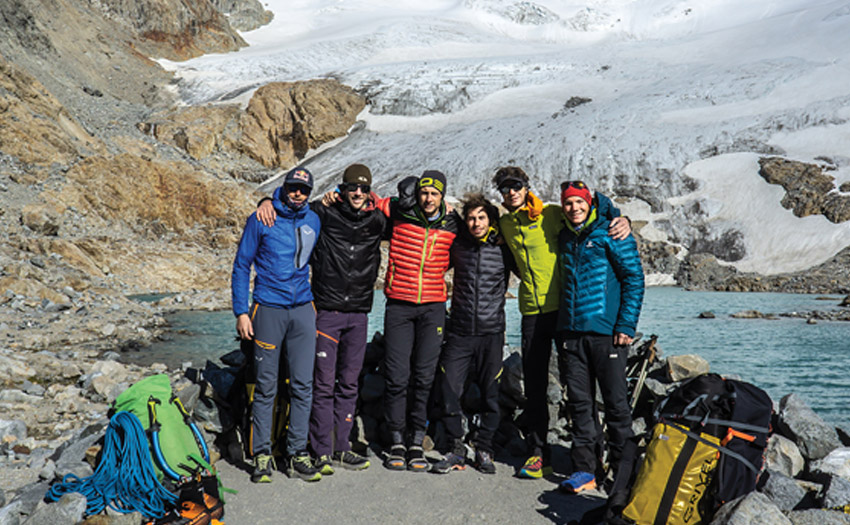
He adds: “I had the glider with me but I didn’t even think about flying. In fact we summited around 3pm, then had really big trouble abseiling because the ropes got stuck. And we had to cut the rope – we only had 30 metres of rope left.”
They used that to abseil down the route until they met up with their friends, a second team of three climbers. “And then we abseiled with two ropes, six guys. And yeah, it was in this storm of wind. Even when we got to the glacier the wind was basically blowing us off it. We had to anchor ourselves with our ice axes.”
The first successful flight came after climbing Aguja Saint Exupery (2,558m). Named after the French writer and aviator who wrote Le Petit Prince (he helped develop the postal system in Patagonia), it was “really a dream”, says Aaron.
“The climbing route we climbed was difficult. And also the conditions weren’t easy. It was up to [rock climbing grade] 7a with ice in the cracks.
“So we had to switch between crampons and climbing shoes, and switch between using ice-axes and then our hands. It was basically 15 hours non-stop climbing to get to the top.”
They summited close to sunset at about 9.30pm. “It was gusting 50-60km/h from the west, so it wasn’t possible to take off from the top. But I abseiled twice, 60 metres down the peak, and I found a little spot in the lee where I managed to take off. It was really sketchy, but…”
He flew down to the end of the glacier, where he waited for his two climbing partners to join him. “It took them like six hours to abseil down.”
In Patagonia, he explains, it is normal to climb as a three, so if one person gets in trouble, two are there to help. “You can also split the weight better, because you need so much stuff to climb there.”
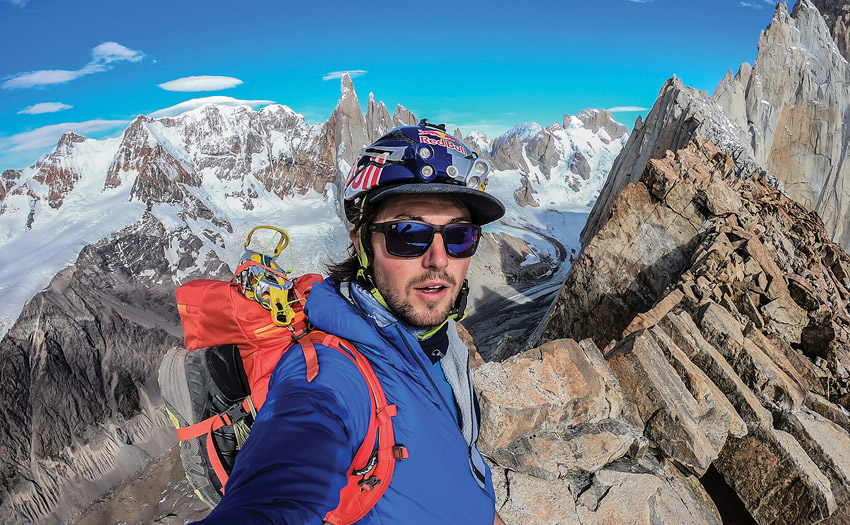
Next on the list was an ascent of the 2,330m Aguja de l’S. “Mostly that was climbing in rock shoes, but again I didn’t manage to take off from the top because it was about 60-80km/h of wind.”
He did however launch his tandem from lower down, and made a short flight from the glacier back to their bivouac. The next morning they also flew back down to the valley.
The small mountain town of El Chalten is the entry point for trekkers and climbers who want to explore the Fitz Roy area. And between climbs Aaron and his crew headed back there to re-group and re-charge. “It meant we could recover better, rather than staying at the climbers’ camp near the mountain.”
It also meant a lot of hiking in and out. “We hiked about 300km over the month.”
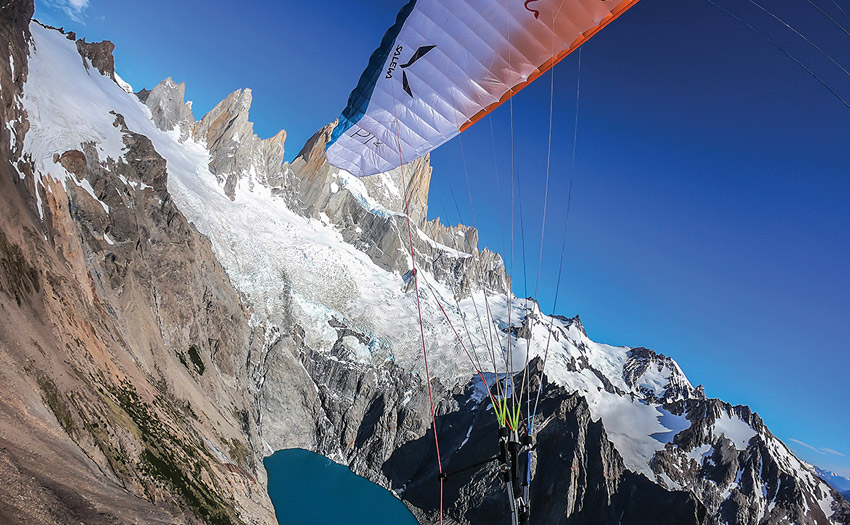
Aaron’s penultimate flight was from the Mojon Rojo, at 2,170m it offers the easiest climb in the region but also some of the most stunning views.
“I did that one on my own,” says Aaron. “I started at 2am from El Chalten and was very light. I basically ran all the way until the glacier, and then crossed the glacier, made the summit and flew back down.”
Launching from just below the summit it gave him one of the most rewarding flights of the trip. He flew once again, from a pass, but, with strong wind and trying to launch in the lee, “that flight was pretty ugly. I landed halfway down because the wind in the valley was like 80km/h.”
All up, the experience left him wanting more, but also knowing that to fly here, “you need some luck”.
“I think there is more to do, for sure. It is a difficult place, but I feel that I understand a bit now how it works. In my view Cerro Torre and the Fitz Roy group act like a barrier and block the wind a bit. So it creates a bit of a lee-side bubble – at least when we are talking about 40-80km/h wind from the west.
“So the conditions are sketchy, but in a sense you can understand how far you can get. Like for example, to fly back to El Chalten is just not possible because there is always this cold air coming from the icefield, which creates a kind of foehn effect down the valley.
“But the good thing is there are many spots where you can recognise what the wind is doing. Watching the lakes for example really helped me understand conditions a lot.”
The X-Alps
It was Aaron’s main climbing partner, Daniel Ladurner, who had suggested the trip to Patagonia in the first place. “Last year he climbed the north face of the Eiger, and then he said, ‘Okay, now the next step is to go to Patagonia.’”
Aaron is a pro mountain athlete, sponsored by ski companies and Red Bull and climbs, skis and flies. A brilliant competition pilot he has won the Paragliding World Cup Superfinal twice and competed three times in the Red Bull X-Alps.
He made the finish in 2013 and 2015, but had to withdraw with a bad knee injury early in the race in 2017. After a full year of rehabilitation he is back in the game and competing in this year’s X-Alps too.
“I had big trouble with my knee after the last X-Alps,” he says. “I’m now getting in a good shape but I am doing really a lot of therapy. Like three days of my week are busy on the therapy.”
It means he will have to adapt his approach to the race. “My strategy for the X-Alps is going to be to fly as much as I can, because that has always been my strong point anyway.
“I can’t run 80km or 90km a day now. So I’m training to be able to say, hike fast or walk for about 30-40km a day. But I’m going to have to really focus on flying.”
If the weather is “average to good” then he rates his chances. “I can really fight for first position.” But if the weather is bad, “it’s going to be tough.”
Anyway, he adds, “I feel really happy I have the chance to take part again, because at the beginning of last year a very famous Italian doctor told me I would not be able to compete again, that my sporting career was over.
“And last year I won the Dolomitenmann, I won the Red Bull Elements, I won the Rise&Fall race in Austria, I have been in Patagonia, I walked 300km with almost no pain, and I am getting ready for the X-Alps. So I think it’s getting on in a good way.”
He adds, “I’m really looking forward to this year’s X-Alps. Whatever is going to happen, I will be happy.”


